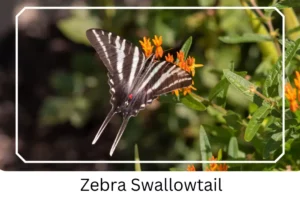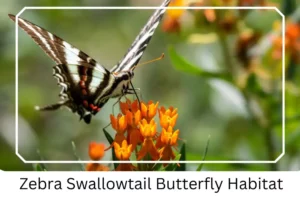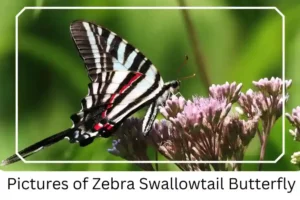Zebra Swallowtail (Protographium marcellus)
The Zebra Swallowtail butterfly is a fascinating species distinguished by its unique zebra-like appearance, making it a subject of admiration among butterfly enthusiasts. Native to North America, these butterflies exhibit striking patterns and behaviors that reflect the intricate balance of ecosystems they inhabit. This expanded guide aims to provide a comprehensive understanding of the Zebra Swallowtail, from its developmental stages to its ecological significance, making it accessible and informative for readers of all backgrounds.
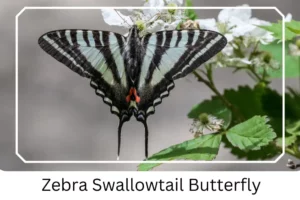
Zebra Swallowtail Butterfly
Scientific Classification
- Family: Papilionida
- Genus: Protographium
- Scientific Name: Protographium marcellus
Overview
Belonging to the family Papilionidae, the Zebra Swallowtail (Eurytides marcellus) captivates observers with its distinct black and white striped wings. This guide delves into the butterfly’s life cycle, including its caterpillar, pupa, and adult stages, as well as its remarkable adaptability to its environment. By exploring the rich tapestry of its life and the role it plays in local ecosystems, we aim to foster a deeper appreciation for this beautiful creature and its conservation.
Description and Identification
Caterpillar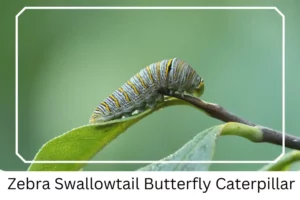
The caterpillar stage of the Zebra Swallowtail is characterized by its vibrant green or black body adorned with light transverse stripes, making it a delightful sight on the leaves of the pawpaw tree, its primary host plant. This relationship highlights the caterpillar’s dependency on specific flora for survival.
Pupa
Transitioning into the pupa stage, the chrysalis exhibits a fascinating range of colors, from brown to green, equipped with three small horn-like projections. This protective casing is a critical phase in the butterfly’s development, leading to its metamorphosis into an adult.
Adult Butterfly
Upon reaching adulthood, the Zebra Swallowtail showcases a set of somewhat triangular wings, detailed with unique patterns and colors.
Sexual Dimorphism: There is little to no difference between males and females in appearance, allowing for a uniform beauty across the species.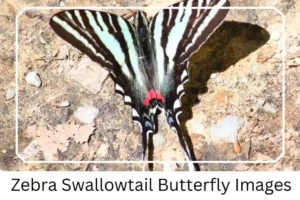
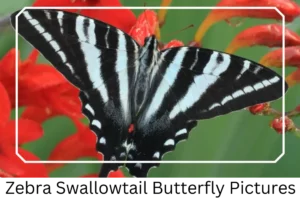
Color and Appearance: The butterfly’s wings present a mesmerizing display of white to greenish-white bases with black stripes. The addition of blue and red spots on the hind wings adds to its allure.
Average Wingspan: Spanning 2.5 to 4 inches, the wingspan of these butterflies is a testament to their elegance and agility.
Flight Pattern: Exhibiting a medium to slow flight pattern, males are observed to fly more briskly during the mating season, showcasing the dynamic nature of their behavior in different contexts.
Eggs
The reproductive process begins with the female laying eggs beneath plant leaves. These butterfly eggs transform in color as they develop, indicating the onset of a new generation.
Quick Facts | |
| Distribution | Predominantly found in the eastern United States and southeast Canada. |
| Habitat | Thrives in moist, low woodlands, alongside rivers and swamps, and can also be found in open fields or brushy areas. |
| Lifespan of Adults | Can live up to six months after emerging from the pupal stage in their natural habitat. |
| Host Plants | Feeds on nectar from flowers of various families, including brassicaceae and fabaceae, among others. |
| Adult Diet | Primarily consumes moisture from sand and nectar from flowers, showcasing their adaptability in sourcing nutrition. |
How to Identify Zebra Swallowtail?
Identifying a Zebra Swallowtail butterfly involves observing several key features beyond its striking black and white wing patterns. Look for the distinctive sword-like tail extensions on the hind wings, a hallmark of the species. The presence of blue and red spots near the wing margins, along with the unique red stripe on the underside of the hind wings when closed, are also indicative. During different seasons, these butterflies undergo a transformation in size and stripe breadth, with summer forms appearing larger and spring forms boasting brighter and whiter hues. By noting these characteristics, enthusiasts can confidently identify the Zebra Swallowtail, appreciating its beauty and understanding its ecological role.
Did You Know?
- Male Zebra Swallowtails engage in ‘puddling,’ a group activity where they gather on moist surfaces to ingest minerals and nutrients critical for their survival and reproductive success.
- These butterflies exhibit significant variations in appearance between seasons, adapting their physical traits to environmental changes and potentially influencing their mating and feeding behaviors.
Conclusion
The Zebra Swallowtail butterfly is not just a marvel of nature’s artistry but also a vital participant in the ecological web. Understanding its life cycle, behavior, and habitat preferences enriches our knowledge and appreciation of biodiversity. By safeguarding their environments and supporting conservation efforts, we can ensure that future generations will continue to enjoy the beauty and wonder of the Zebra Swallowtail butterfly.
Zebra Swallowtail Pictures

Scientific Classification

- Family: Papilionida
- Genus: Protographium
- Scientific Name: Protographium marcellus

